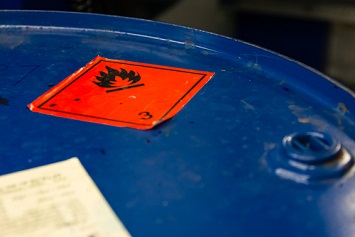The EPA is proposing to revise requirements regarding the test methods that must be used to determine if a liquid waste is a RCRA hazardous waste because it has the characteristic of ignitability.
Under current regulations, one of two flash point test methods specified in the EPA’s Test Methods for Evaluating Solid Waste: Physical/Chemical Methods (SW-846) must be used to make the ignitability determination. But the EPA notes that those methods were approved in regulations issued in 1980 and 1981. Since then the Agency has made preliminary moves to modify the requirements so that more modern methods may be used, but no regulatory change was completed.
The new proposal would allow the use of consensus-based standards that reflect improvements and the modernization of flash point testing that have occurred since 1981. According to the Agency, the proposed changes would affect 217 commercial laboratories that conduct ignitability testing under the older SW-846 methods.
“EPA understands that many generators and laboratories already have instrumentation capable of modern flash point testing,” the Agency states. “Therefore, the proposed update adds the flexibility of using modern test methods, provides the potential for cost savings, and enhances the protection of human health and the environment while providing equivalent results.”
In the same proposal, the Agency is seeking to make additional revisions regarding the regulatory exclusion in the ignitable characteristic rules for aqueous liquids containing alcohols; sampling guidance applicable to waste mixtures with multiple phases when determining whether a waste exhibits the ignitability characteristic; and alternatives to the use of mercury thermometers in the air sampling and stack emissions methods in SW-846.
Existing Methods
Currently, to determine whether a liquid waste is an ignitable hazardous waste under RCRA (i.e.,has a flash point less than 60°C (140 °F)), its flash point must be assessed according to either of the two following procedures:
- Method 1010A uses a procedure and instrumentation commonly referred to as the Pensky-Martens method, a closed-cup approach that aims to simulate a liquid spill in a closed environment. This method is appropriate for liquids that are nonhomogeneous, form films, have high viscosities, or are slurries because it uses an instrument that can mechanically mix wastes.
- Method 1020B employs a small-scale closed-cup device called a Setafish. This method provides the practical advantage of reduced sample size and, therefore, reduces lab waste generation when compared to the Pensky-Martens method.
Either method requires use of mercury thermometers, which are being phased out because of environmental, health, and safety concerns.
Proposed Updates
The EPA is proposing to update Method 1010A to Method 1010B and Method 1020B to Method 1020C. Both proposed updates include the allowance for an automatic method with electronic flash point detection, the option to use a flame ignition source or an electric ignition source, and use of nonmercury temperature devices. The proposed methods are identical to methods developed and maintained by ASTM International, a nonprofit organization comprising producers, users, consumers, government, and academia that develops and publishes consensus-based standards.
Under the proposal, testing would still be allowed using the older methods.
Other Proposed Revisions
In addition, the proposal would:
- Codify existing guidance regarding the regulatory exclusion in the ignitable characteristic for aqueous liquids containing alcohols. Currently, the exclusion applies to any aqueous solution containing less than 24 percent alcohol by volume. However, the EPA has provided guidance noting that the exclusion may inadvertently exclude certain wastes that have low amounts of alcohol but other components that result in the regulatory definition of ignitability. The proposed revision would incorporate the guidance into the regulations.
- Add new regulatory language to clarify that the EPA’s existing sampling procedures for multiphase samples would be applicable to all liquid wastes tested for ignitability.
- Clarify how to properly test multiphase wastes containing multiple liquid(s) with or without solids for ignitability determinations.
Finally, the proposal would update SW-846 air sampling and stack emissions for Methods 0010, 0011, 0020, 0023A, and 0051, each of which uses mercury thermometers. The update would provide current users of these methods with the flexibility to use alternative temperature-measuring devices instead of the currently required mercury thermometers.
The proposal was published in the April 2, 2019, Federal Register (FR).

